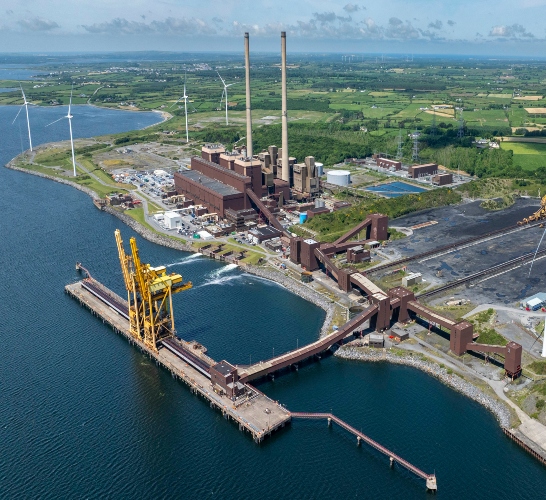Start of a new era at Moneypoint
Having used coal for the last time in June 2025, Moneypoint Power Station in Co Clare is gearing up for an exciting new chapter: as a renewable energy hub enabling Ireland’s net zero future.
Read the blogHaving used coal for the last time in June 2025, Moneypoint Power Station in Co Clare is gearing up for an exciting new chapter: as a renewable energy hub enabling Ireland’s net zero future.
Read the blog
Moneypoint was commissioned between 1985 and 1987 by ESB to meet increasing demand for electricity, reduce Ireland’s dependence on imported heavy fuel oil (HFO) and mitigate the impact of the 1970s oil crises.
With the potential to store sufficient coal for up to three months of operation, the station provided fuel diversity and a dependable source of energy in a sector increasingly dependent on variable renewable resources of energy such as wind and solar, and separately, natural gas.
Coal was purchased on the international market through registered procurement companies, utility trading business units and specialist traders. As the station required a specific type of coal for its operation, there were a limited number of mines globally that could meet those specifications.
To ensure we sourced coal in an ethical and responsible way on the international market, as well as addressing concerns about operations at such coal sites, we joined Bettercoal in 2014.
Bettercoal was established to promote continuous improvement in mining and sourcing coal for the benefit of all the people affected by the industry – including workers and their communities. In effect, it is working towards a globally responsible coal supply chain. More information on Bettercoal is available on their website.
Between 2015 and 2025, the predominant sources of coal for Moneypoint were from Colombia (principally from the Cerrejón mine) and Russia. In the period up to 2020, ESB shifted away from use of Colombian coal and Russia was the primary source of supply. In fact, Moneypoint had not taken delivery of any coal from Colombia in the period from 2018 to early 2022.
Following the Russian invasion of Ukraine, we switched procurement of coal away from Russia. At that time, we had to quickly source alternative supplies to ensure Moneypoint was available to meet the needs of the Irish electricity system. Due to the lack of suitable coal being available from other sources at that time, we secured replacement coal for Moneypoint from Cerrejon to ensure uninterrupted supplies were available to support the security of supply needs within the State. We also supplemented sources of coal including South Africa and Australia.
After long signalling our intent of ceasing coal at Moneypoint, we announced in June 2025 that we had achieved this ahead of schedule.